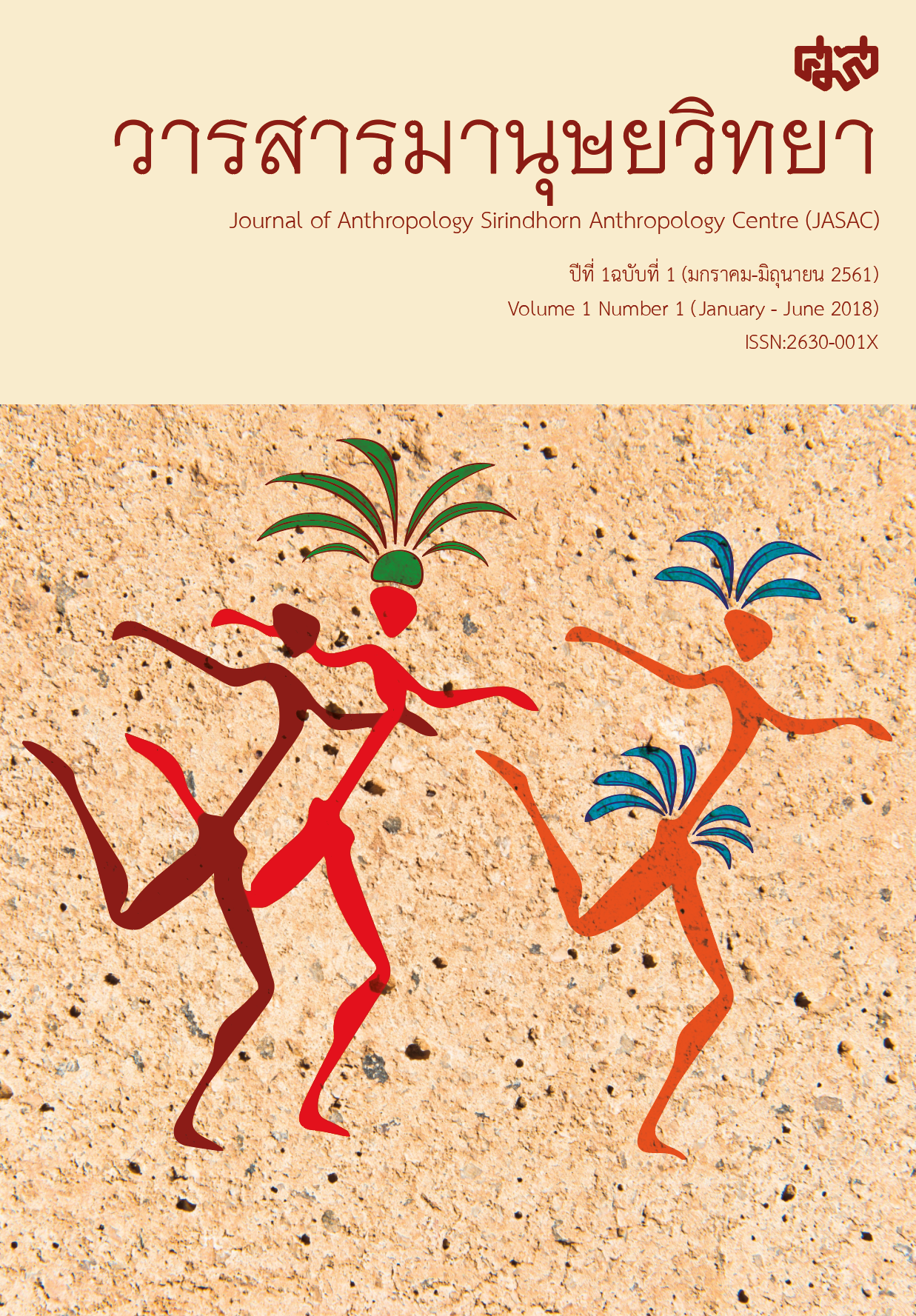เจดีย์สี่ครูบา: ศาสนสถานและความทรงจำทางสังคมในล้านนา
Main Article Content
บทคัดย่อ
ศาสนาพุทธเถรวาทในเขตวัฒนธรรมล้านนาซึ่งครอบคลุมอาณาบริเวณชายแดนรอยต่อ 5 ประเทศคือ จีน พม่า ไทย ลาว และเวียดนาม นั้นมีลักษณะเด่นสำคัญคือ (1) การใช้ตัวอักษรธรรม (2) การมีวรรณกรรมศาสนา คติชนวิทยาพื้นบ้าน ตำนานต่าง ๆ ชุดเดียวกัน (3) เป็นศาสนาที่ผสมผสานกับความเชื่อและการนับถือผี และ (4) การมีโลกทัศน์ความเชื่อเกี่ยวกับเรื่อง “ต๋นบุญ” บทความนี้เสนอว่า ในบริบทของการเปลี่ยนแปลงเชิงประวัติศาสตร์ซึ่งนำไปสู่การรื้อถอนความเป็นถิ่นฐานในท้องถิ่นภาคเหนือของประเทศไทย ปรากฏการณ์การเคารพนับถือครูบาซึ่งชาวบ้านเชื่อว่าคืออวตารของต๋นบุญนั้น ไม่เพียงแต่จะเข้าใจได้ว่าเป็นรูปแบบหนึ่งของการเคลื่อนไหวรื้อฟื้นพุทธศาสนาดังที่ Paul Cohen เสนอ แต่ยังหมายถึงกระบวนการสร้างความทรงจำทางสังคมผ่านการเคารพ และครูบาคือบุคคลที่ถูกจารึกจดจำ ฉะนั้นความคิด ความเชื่อและประเพณีปฏิบัติต่าง ๆ ที่ชาวบ้านในเขตวัฒนธรรมล้านนามีต่อครูบา ก็คือสิ่งที่สะท้อนให้เห็นถึงปฏิบัติการของความทรงจำทางสังคมในท้องถิ่นที่ต้องเผชิญหน้ากับการเปลี่ยนแปลงและความไม่แน่นอนของชีวิตและการใช้ชีวิตในสังคมสมัยใหม่
Article Details

อนุญาตภายใต้เงื่อนไข Creative Commons Attribution-NonCommercial-NoDerivatives 4.0 International License.
ลิขสิทธิ์@ของวารสารมานุษยวิทยา
ศูนย์มานุษยวิทยาสิรินธร (องค์การมหาชน), กรุงเทพฯ, ประเทศไทย
ข้อมูลเพิ่มเติม:
https://creativecommons.org/licenses/by-nc-nd/4.0/


